The Pie That Molly Grew by Sue Heavenrich, illustrated by Chamisa Kellogg; Sleeping Bear Press, 2023.
Follow along as Molly plants a seed, nurtures the growing vine, observes bees that carry pollen from flower to flower, harvests a (huge!) pumpkin, and bakes a pie she shares at an outdoor gathering. True to the rhyme scheme of “The House That Jack Built” the text will engage readers and listeners as they learn. Includes back matter that delves into planting tips, offers a pumpkin pie recipe, and reminds readers of the vital importance of bees to growing crops.
“If you have a garden and a library, you have everything you need.” ~ Marcus Tullius Cicero
Why this book? Why will it matter to kids?
Molly is an industrious, likeable child who cares for her soon-to-be-pumpkin at each stage of its development. The jaunty rhyme and burgeoning verses reflect the growth of the pumpkin, and the way the text visually mimics vines as it dances across the page is certain to add to a festive autumnal read-aloud experience.
Levels and Layers of Learning
Grade level: Pre-K-Grade 3
Social-Emotional Learning Themes
Compassion, concern, connection, creativity, curiosity, dedication, diligence, effort, empowerment, encouragement, fortitude, friendship, gratitude, helpfulness, hope, inspiration, kindness, perseverance, persistence, perspective, resourcefulness, respect, responsibility, responsible decision-making, relationship building , self-assurance, self-awareness, self-reliance, tenacity
Content Area Connections: ELA, Science, Social Studies, Family and Consumer Sciences, Math
Using This Book in the Classroom
Hit the Ground Running Ready Resources for Educators, Homeschoolers, and Parents
The Pie That Molly Grew activities
The Pie That Molly Grew Teaching/Activity Guide is due soon from Sue. I’ll post notice of it on the blog once it becomes available.
Learn more about “children’s author and backyard explorer” Sue Heavenrich and her books on her website.
Sue discusses the idea seed for her book: “One Seed, Many Connections”
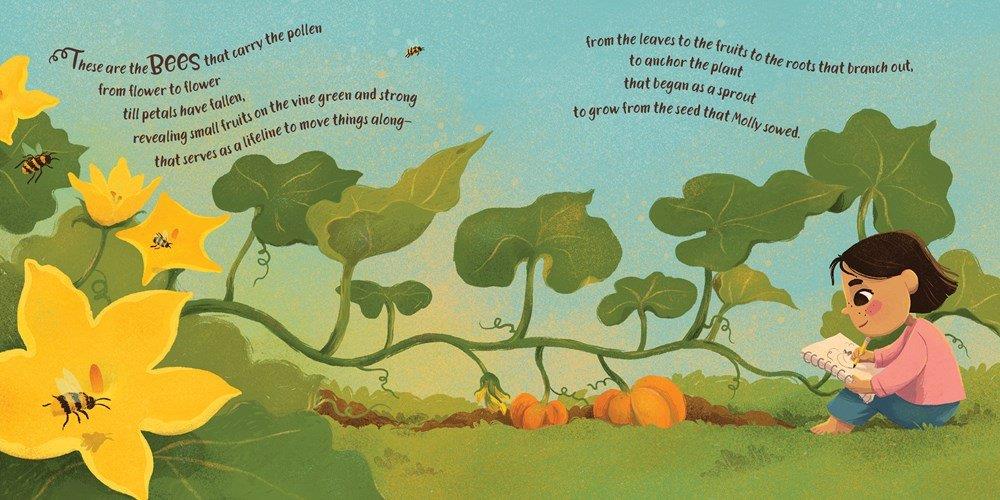
Illustration © Chamisa Kellogg
Write Away! Ideas to prompt writing
What is your favorite kind of pie? Why? What words would you use to describe it to someone who has never tasted it?
If you were planting a garden, what kinds of seeds would you like to grow? Why?
Find the rhyming words in this book. Make a list of them. Then make a list of the new words you learned in this story about Molly and the pie she grew. Can you think of words to rhyme with them?
Poetry Break Related poetry to recite before or following the reading of this book
Poetry breaks fit perfectly into brief moments in the school day—from opening or closing exercises to lining up for lunch; from zipping up backpacks and jackets to transitioning from one subject to the next. Reading a poem typically takes less than a minute; yet, it can introduce or reinforce a concept, provide clarity, celebrate language, exemplify rhythm, enhance vocabulary, expand understanding of a concept, increase attention span, initiate reflection, spark imagination, or simply summon a giggle. And, poetry soothes and strengthens the spirit.
“Poetry builds resilience in kids and adults; it fosters Social and Emotional Learning. A well-crafted phrase or two in a poem can help us see an experience in an entirely new way.” ~ Elena Aguilar
Related poetry to share with Sue’s book:
- Autumnblings by Douglas Florian
- Behold Our Magical Garden: Poems Fresh From a School Garden by Allan Wolf, illustrated by Daniel Duncan
- Follow the Recipe: Poems About Imagination, Celebration & Cake by Marilyn Singer, illustrated by Marjorie Priceman
- When Green Becomes Tomatoes: Poems for All Seasons by Julie Fogliano, illustrated by Julie Morstad; see “october 31”
And Then There’s This…
Enrichment activities, related books, online resources, craft projects, and ideas for further study
Ideal for preschoolers and primary classrooms, here’s a simple sixty-second interactive ditty, “Have You Ever Seen a Pumpkin?” presented by Reading Rena.
How to plant and grow pumpkins is explained on the Almanac website and includes a short video.
National Pumpkin Pie Day 2023 is December 25th. Learn more, including a Pie Day timeline and interesting facts. For instance, did you know that a serving of pumpkin pie contains the daily recommended intake of vitamin A and is abundant in vitamin C, potassium, and iron?
Related Books of Interest:
Applesauce Season by Eden Ross Lipson, illustrated by Mordicai Gerstein
Flight of the Honey Bee by Raymond Huber, illustrated by Brian Lovelock
The Good Garden: How One Family Went from Hunger to Having Enough by Katie Smith Milway, illustrated by Sylvie Daigneault
How Many Seeds in a Pumpkin? by Margaret McNamara, illustrated by G. Brian Karas
How To Say Hello to A Worm: A First Guide to Outside by Kari Percival
Kaia and the Bees by Maribeth Boelts, illustrated by Angela Dominguez
Lila and the Jack-O’-Lantern: Halloween Comes to America by Nancy Churnin, illustrated by Anneli Bray
Old Manhattan Had Some Farms by Susan Lendroth, illustrated by Kate Endle; resources include a song by Caspar Babypants
This Is the House That Jack Built by Simms Taback
This is the Tree We Planted by Kate McMullan, illustrated by Alison Friend. See a previous Children’s Book Corner blog post about this picture book that also follows the “This is the House That Jack Built” rhyme scheme.
Meet the Author
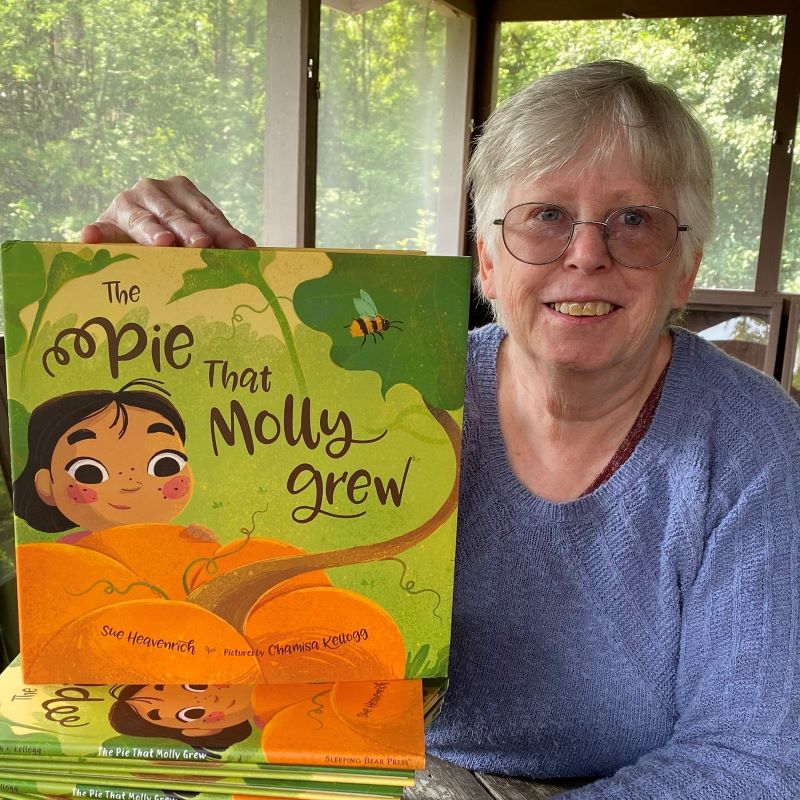
Photo credit: Jenna Lindeke Heavenrich
Sue Heavenrich
Sue Heavenrich is a curious naturalist and is particularly amazed by the diversity of insects that visit her garden. She has followed ants in the desert, tagged bumble bees in the Rockies, taught science to high-schoolers, and filed hundreds of articles as an environmental and community journalist. A few years ago Sue traded in her reporter’s notebooks for composition books and began writing for children. When not writing, she counts pollinators as a community science volunteer. The world outside her back door inspires Sue to ask questions and look closer. Find out more on Sue’s website. Check out her blog and follow her on Facebook.
Backstory: Q & A with Sue Heavenrich
I have enjoyed getting to know Sue through our connection with SCBWI (Society of Children’s Book Writers and Illustrators) where we meet virtually with other published children’s writers in our region to discuss the “business of writing” and to celebrate each other’s bookish successes. Sue leads the group with energy and humor! I’m happy to introduce her to the Children’s Book Corner blog friends this month to celebrate the release of her newest children’s book. Welcome, Sue!
Judy Bradbury: Tell us about this project: how you became interested in writing a children’s picture book about seeds and the pumpkins they become for young children, and how you came to the idea to create The Pie That Molly Grew using “The House That Jack Built” as inspiration.
Sue Heavenrich: I’m a gardener, and I love imagining the salads and salsa and scrumptious pies that will come from my harvest. Then, one wintry day, I came across a post by Susanna Leonard Hill. It was National Pie Day and she challenged us to write a story …. about the biggest pie; the smallest pie; pies stacked sky high. I started thinking about the pies I like (apple pie and key lime), the pies I don’t (rhubarb) and the pie I love: pumpkin pie. A line came to mind and got stuck like an earworm until I finally wrote it down: This is the pie that Molly made. The structure of the book grew from that line. No matter how I tried to write the story, that line kept nagging me, until I finally just went with the flow. Eventually I changed it to begin with planting the seed and the book came together.
JB: Tell about one hurdle you experienced in the creation of The Pie That Molly Grew, or provide a memorable (or humorous!) anecdote related to the writing of the book.
SH: Ask me a question about growing pumpkins and I’ll have no trouble sharing how to plant seeds. I can talk your ear off about plants. But sharing that info and making sure I have the right words that fit the rhyme and meter? That’s a whole ‘nother thing! I had to toss out a whole bunch of perfectly good words: photosynthesis, xylem, phloem, anthers… The challenge was showing how the plant grows while keeping the science true.
JB: What is one unexpected joy that came out of the creation of The Pie That Molly Grew?
SH: The ending. I wanted Molly to bake the pie for her family, but then I thought of my favorite pie experiences. It’s been celebrations, so I brought that to the story: a celebration of thanks for the earth and the sun and the rain and the bees that helped make the pumpkin grow.
JB: What would surprise readers to learn about you or about the writing of The Pie That Molly Grew?
SH: While I like the rhythm of the traditional “House that Jack Built,” I do not like the repetition. After the fourth verse I find it tedious to recite the ever-growing list of things. So, I decided to make the repetitive phrases in my book less … repetitive. I shortened phrases and changed some of the words – heck, I even eliminated entire sentences to keep things moving along.
JB: What do you hope young listeners and readers will take away from The Pie That Molly Grew?
SH: I would love it if kids (and the adults who read this story to them) would try planting something. It doesn’t have to be a pumpkin – it can be a tomato plant or carrots or beets. And they don’t have to have a garden patch. A lot of vegetables and fruits can grow in containers on a balcony or porch. There is something so satisfying about nurturing the plants and then eating the fruits of your labor. And it’s a grand excuse to play in the dirt!
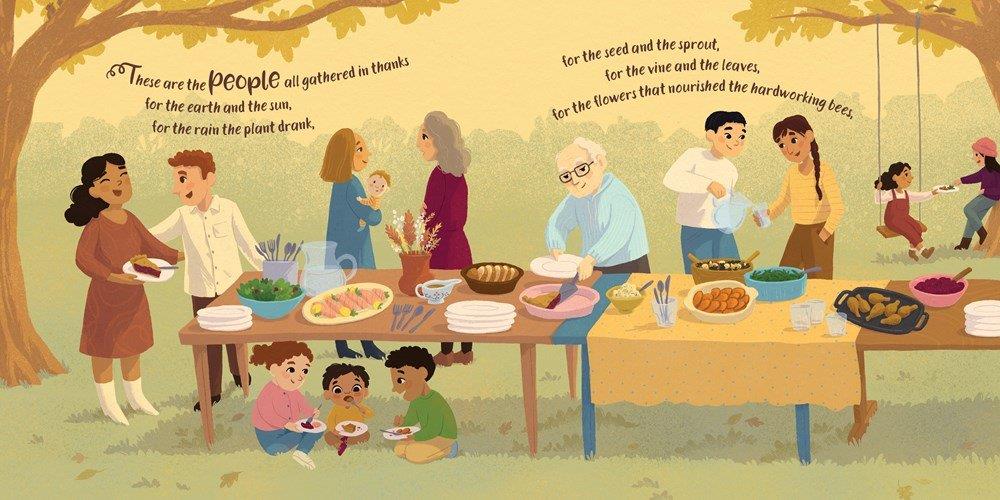
Illustration © Chamisa Kellogg
JB: What need(s) does this story satisfy, or who do you perceive your target audience to be and why?
SH: When I wrote The Pie That Molly Grew I could see it being read to children by a family member, or at a library story hour. I wanted to write a fall book about a pumpkin that wasn’t specifically about Halloween, but embraced the whole of fall: harvest, giving thanks… and I also wanted to shine a light on how essential the native bees are for pollination services. Without bees, there would be no pie! Pumpkins have both male and female flowers, and someone has to move the pollen from the male flowers to the female flowers!
JB: How do you see The Pie That Molly Grew connecting to curriculum or being used in schools or learning settings?
SH: I taught science, and I homeschooled my own kids for a few years, so I was always looking for “curriculum connections” with the books we read. The Pie That Molly Grew would be a perfect story for Agriculture in the Classroom. It shows how plants grow (science) and is a seasonal story (social studies). It can serve as a model for young writers to try to write their own cumulative story (language arts). In the back matter I talk about pumpkins as a fruit native to the Americas (social studies) and more about the bees that pollinate the flowers (science). I also include how to roast a pumpkin and make a pie the way my grandma taught me (family connections and math). And I’m pretty sure that harvesting and carrying pumpkins counts as PE. If not, it should – those babies can weigh 5 pounds or more!
JB: What project(s) are you currently working on?
SH: I am finishing up a teacher’s guide for The Pie That Molly Grew – because there are so many fun things to do with pumpkins (in addition to eating them)!
Meet the Illustrator
Learn more about Chamisa Kellogg and find her on Instagram.
Sidebar Spotlight New releases of note
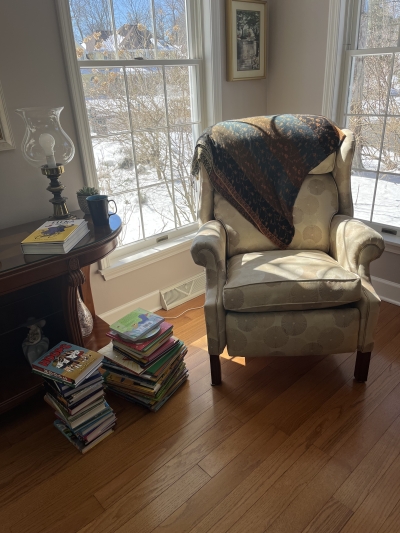
Each month I receive several boxes of books to review from various publishers. As I read and peruse the books, I place them in two piles: those that I will consider featuring on the blog, and those that don’t fit the mission or theme of Children’s Book Corner blog for whatever reason. I highlight some of the books in the “possible” pile on Mondays (most weeks) on Instagram. Ultimately, I choose the one new release I will feature on my monthly blog post. Yet there are many terrific books I wish I could give a shout-out to, even if I can’t write an entire post about each one. So, Sidebar Spotlight is a means of giving a nod to new releases that, in my opinion, are noteworthy. I’ve linked each title to Bookshop so you can learn more. Happy reading, friends! And feel free to comment on these or other new books below.
Bears are Best! by Joan Holub and illustrated by Laurie Keller is chock full of bear-y interesting info offered amid wacky “panda-monium”… you get the idea. This giggly nonfiction nuttiness is sure to please—and inform—your read aloud crowd.
Mascot by Charles Waters and Traci Sorell is a novel in verse for middle school readers that explores the feelings and differing viewpoints surrounding a school’s team mascot as told through the eyes of various students and adults. Here’s a book that enables conversation among students and reinforces the wisdom of seeking to understand and respect different points of view. It also sheds light on how hurtful “tradition” can sometimes be.
Shark and Bot: Epic Roller Coaster Ride! by Brian Yanish is Book #4 in the Shark and Bot early reader graphic novel series. This rollicking adventure is filled with fun, friendship, sleepovers, a lost (and found) sibling, robot chipmunks, scary amusement park rides (that turn out to be not-so-scary), and more. A whole lotta entertainment here that reinforces how much FUN reading can be!
News, Updates, & Items of Interest
I’m currently booking school visits! Find information and contact me to discuss a school visit tailored to meet your needs.
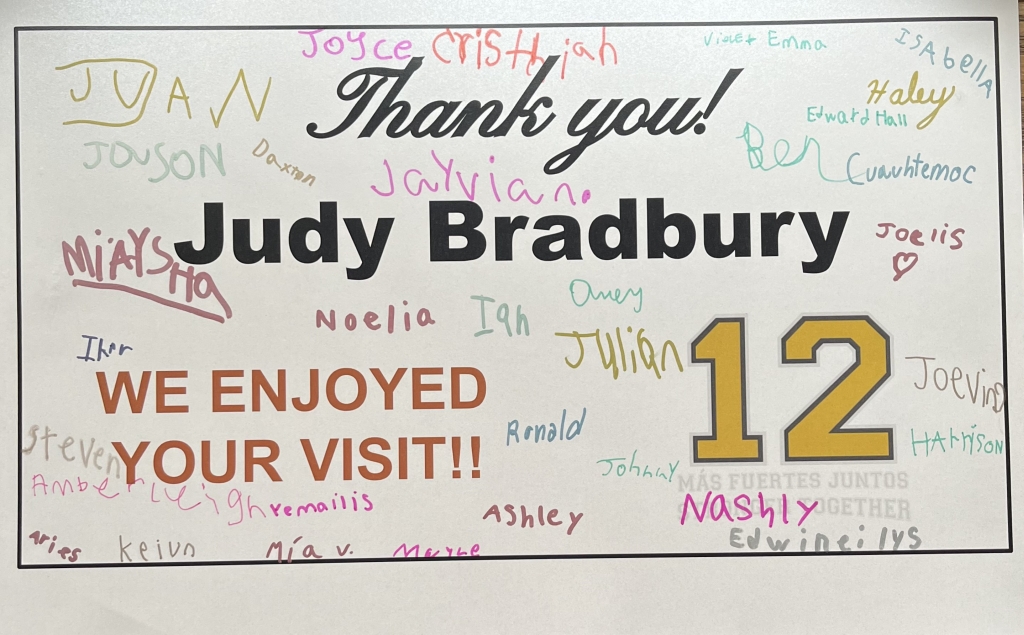
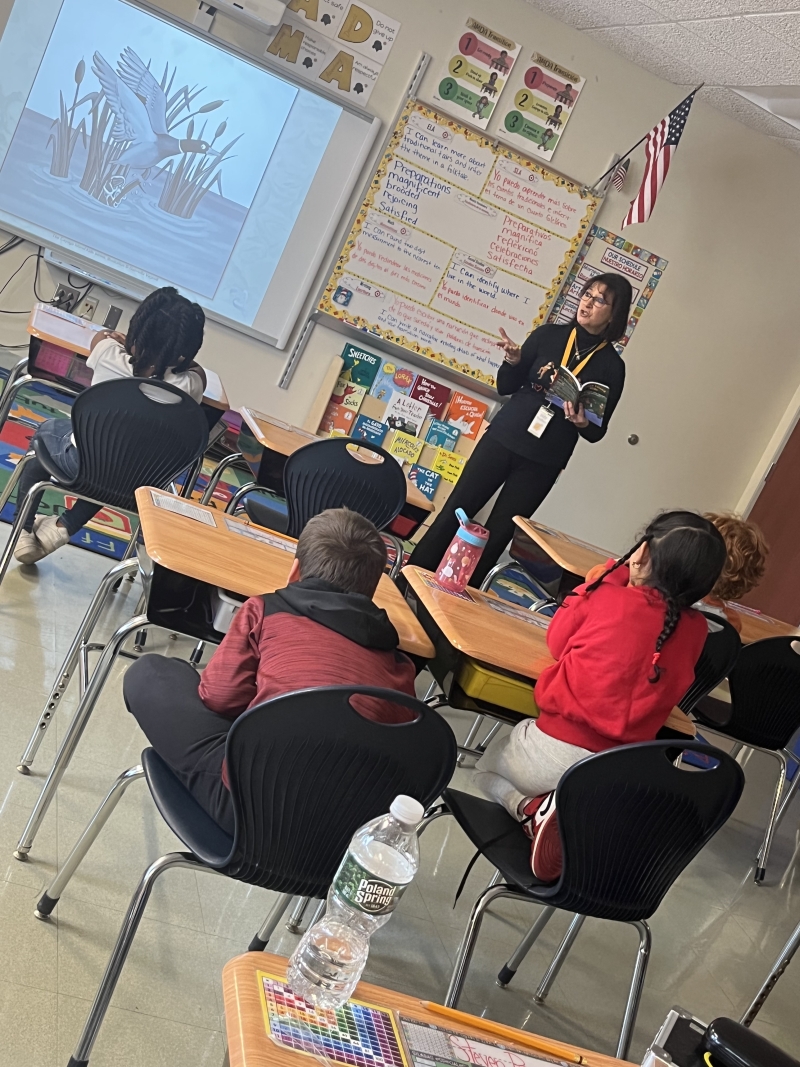
Read-aloud of a portion of Cayuga Island Kids Book 2, The Adventure of the Big Fish by the Small Creek
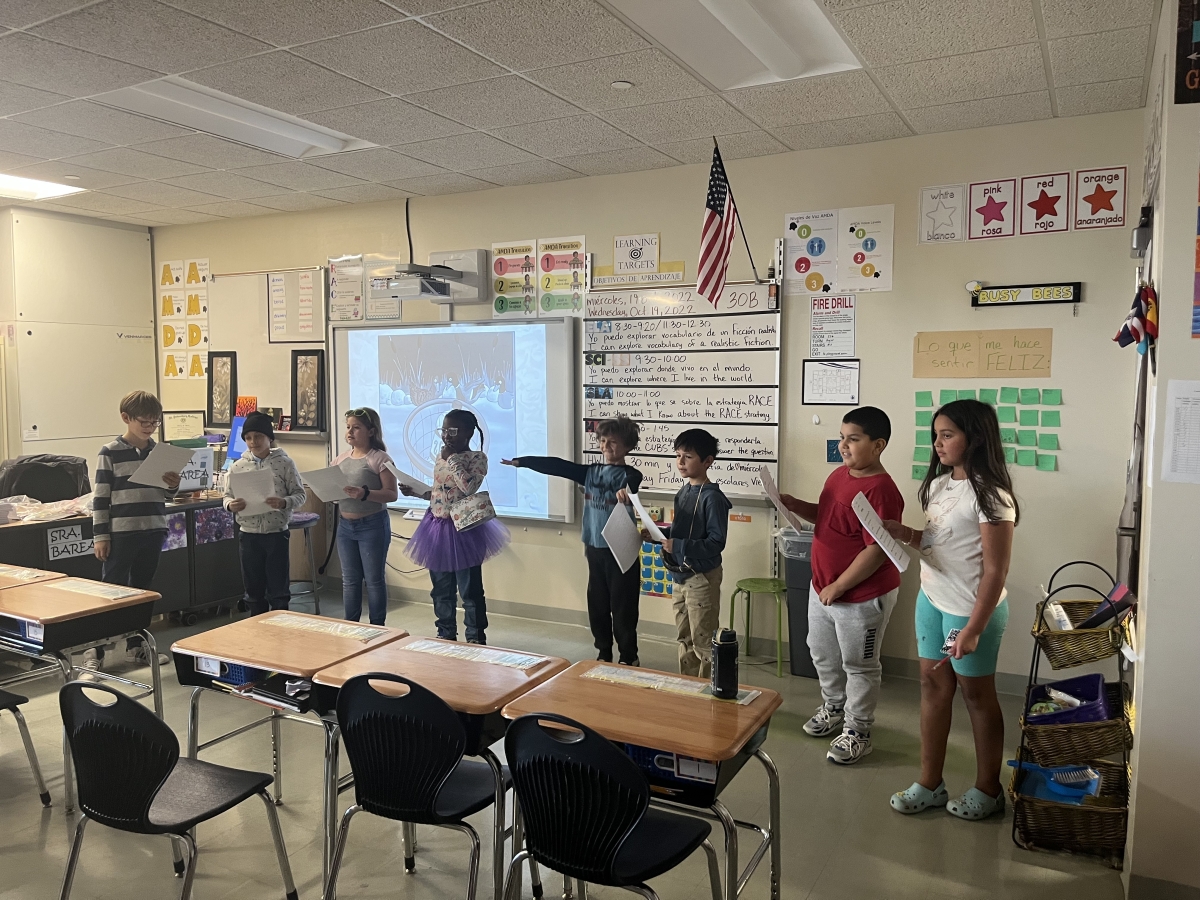
Readers Theater, complete with props!
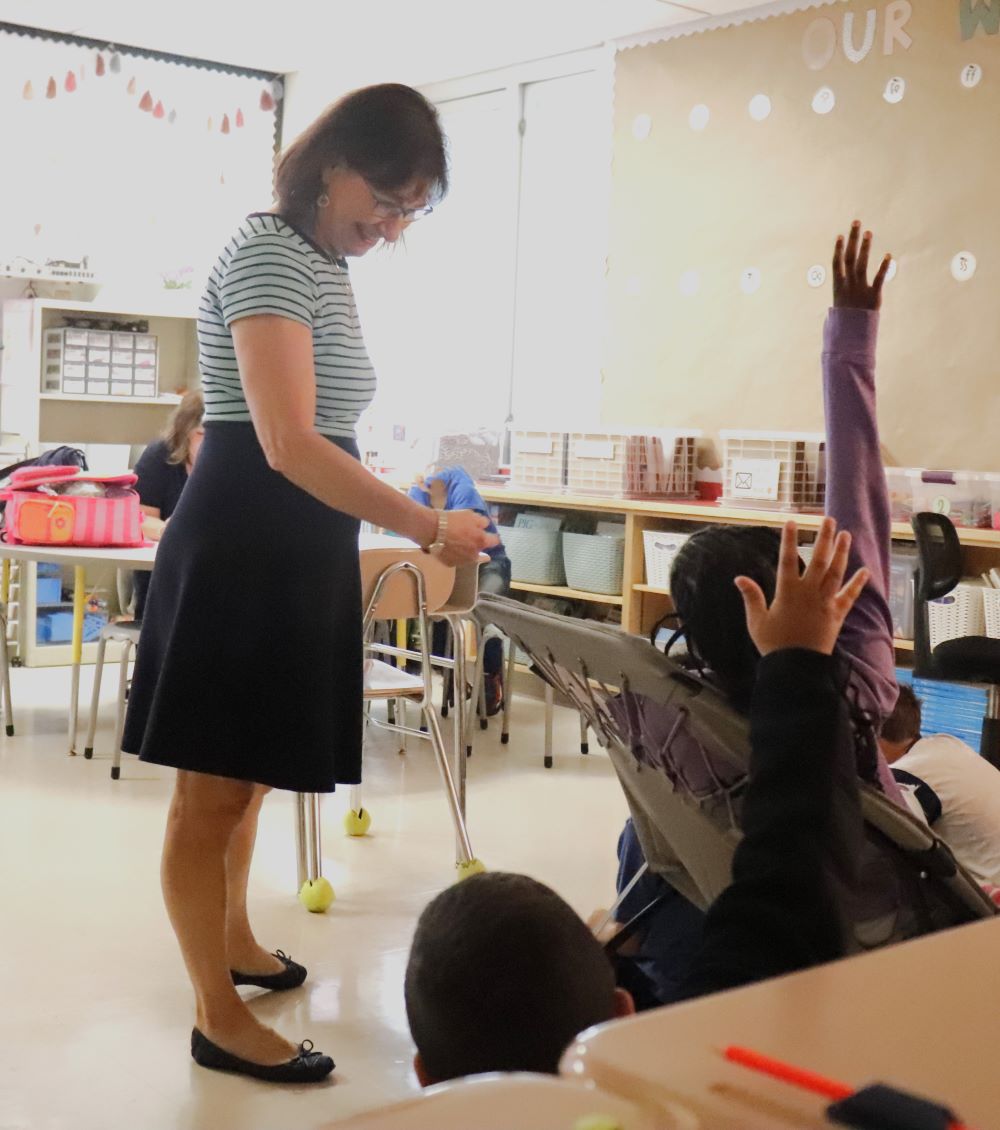
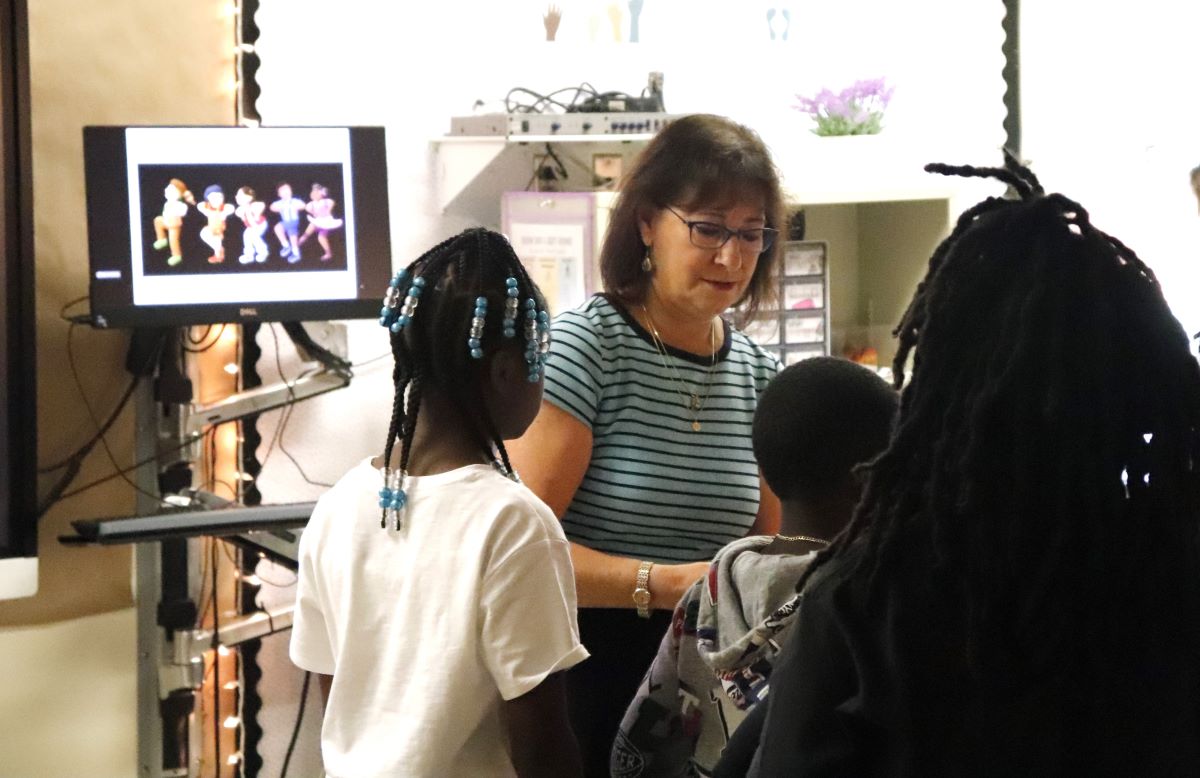
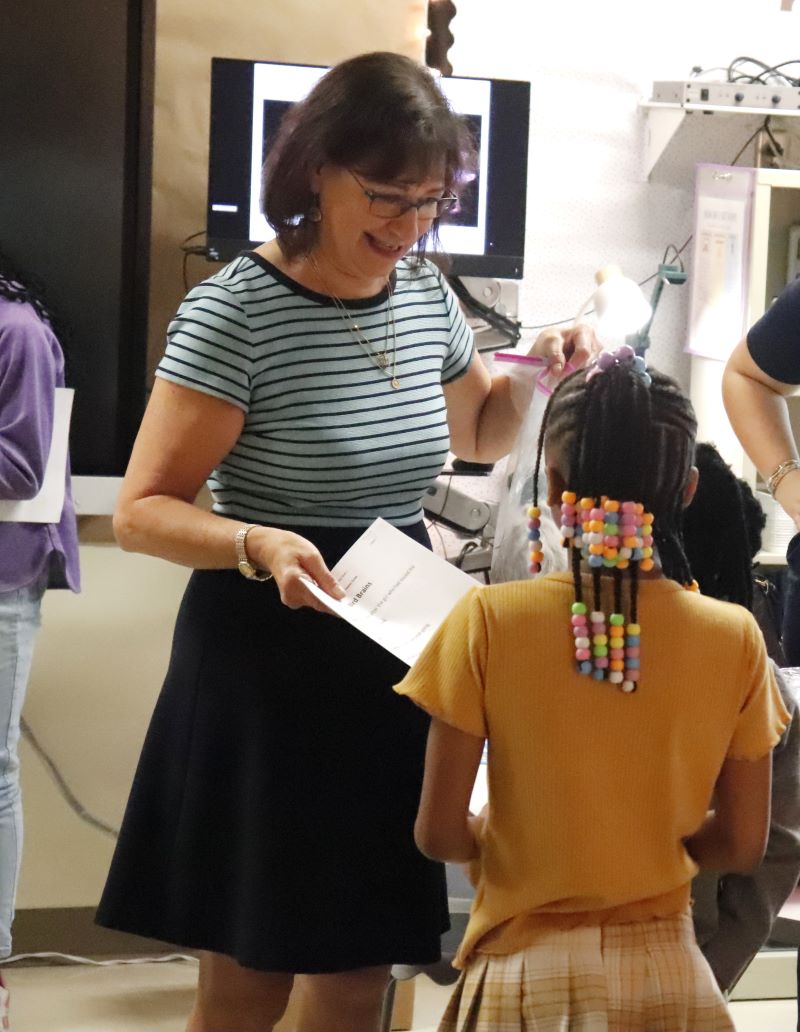
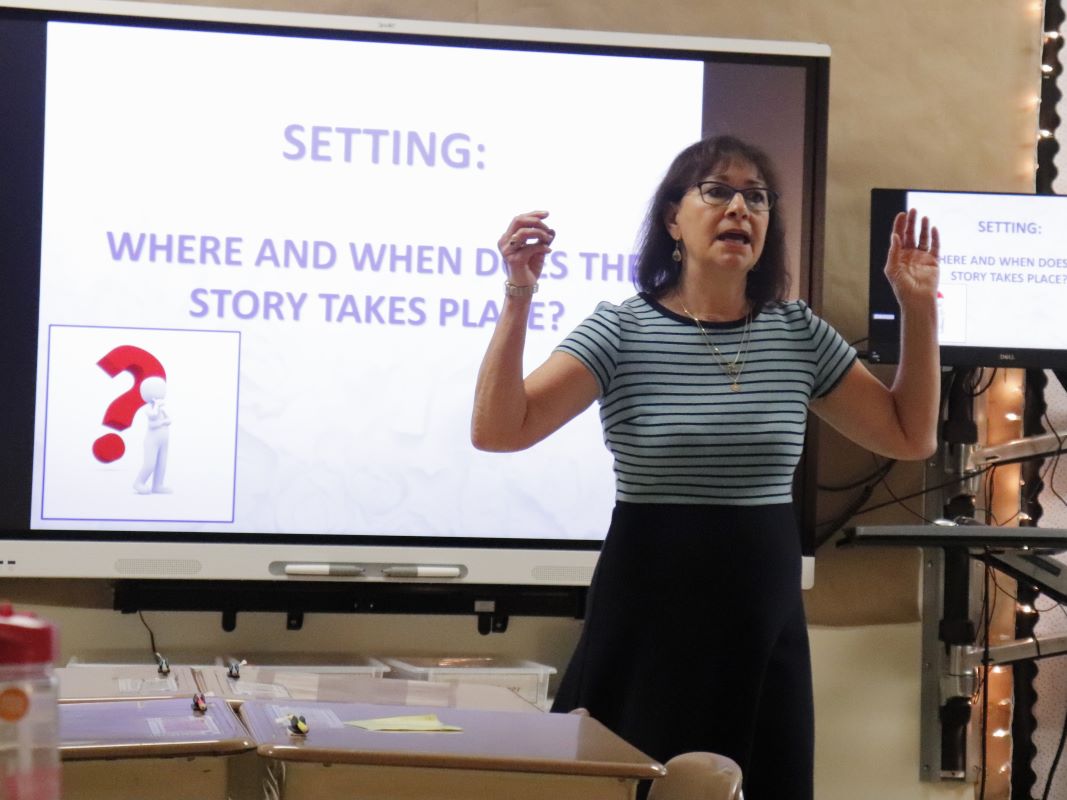
September 15th marked the release of the packaged set of the Cayuga Island Kids series! Find it at your favorite bookshop or purchase it directly from the publisher. Individual titles are also available in hard, softcover, and e-book versions.
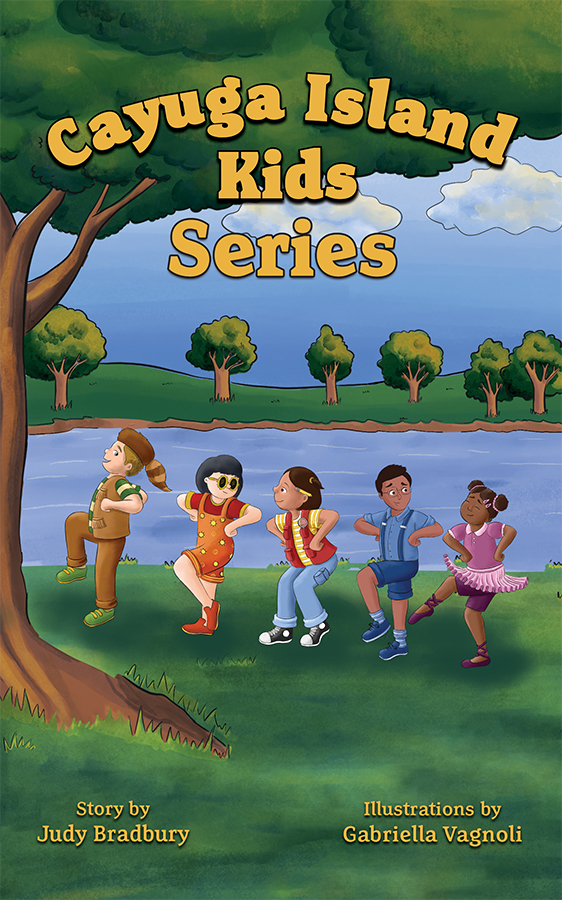
Find where my books and I will be on my Events page.
Kindness tip: If you read and like a book, consider posting a review on GoodReads, social media, or on Amazon (if you bought it there). Authors and illustrators appreciate the shout-out. Even a one-sentence comment increases visibility of a book. Also consider placing a request with your local library to purchase a copy–another free way to support a book you recommend!
Many publishers provide free downloadable educator guides, videos, and activities to accompany their children’s and YA titles. I listed a few links last month and offer a few more here:
Fall Children’s Book Week is scheduled for November 6-12. Sign up to participate and receive three free copies of Rilla Alexander’s poster. You will also have access to an educator kit. Learn more. Email Children’s Book Council with questions.
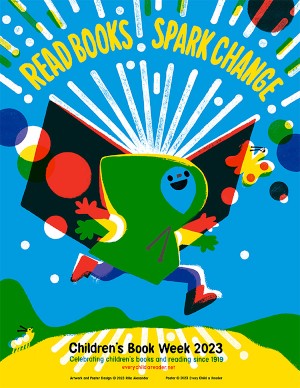
Learn more about the artist’s inspiration for the design.
Over to You…
Join the conversation! Offer your thoughts on this featured prompt related to this month’s post:
What recently published fall-themed STEM/STEAM picture do you recommend? Share the title and author of the book in the comments section.
You are also welcome to post a general comment.
Sue has generously offered to send a signed copy of The Pie That Molly Grew to a Children’s Book Corner Subscriber! Comment on this post to be entered in the raffle! Deadline: 11/15/23.
The lucky winner of a copy of Light Comes to Shadow Mountain, the subject of last month’s Children’s Book Corner blog post, is Deb! Thanks to Holiday House for providing the copy of Toni’s novel to be gifted to our winner.
Not a subscriber? Sign up here!
Thanks for sharing your thoughts!
Final Thought
“In November, cool days lure me out / to gather pumpkins strewn about.” ~ Bill Martin, The Turning of the Year

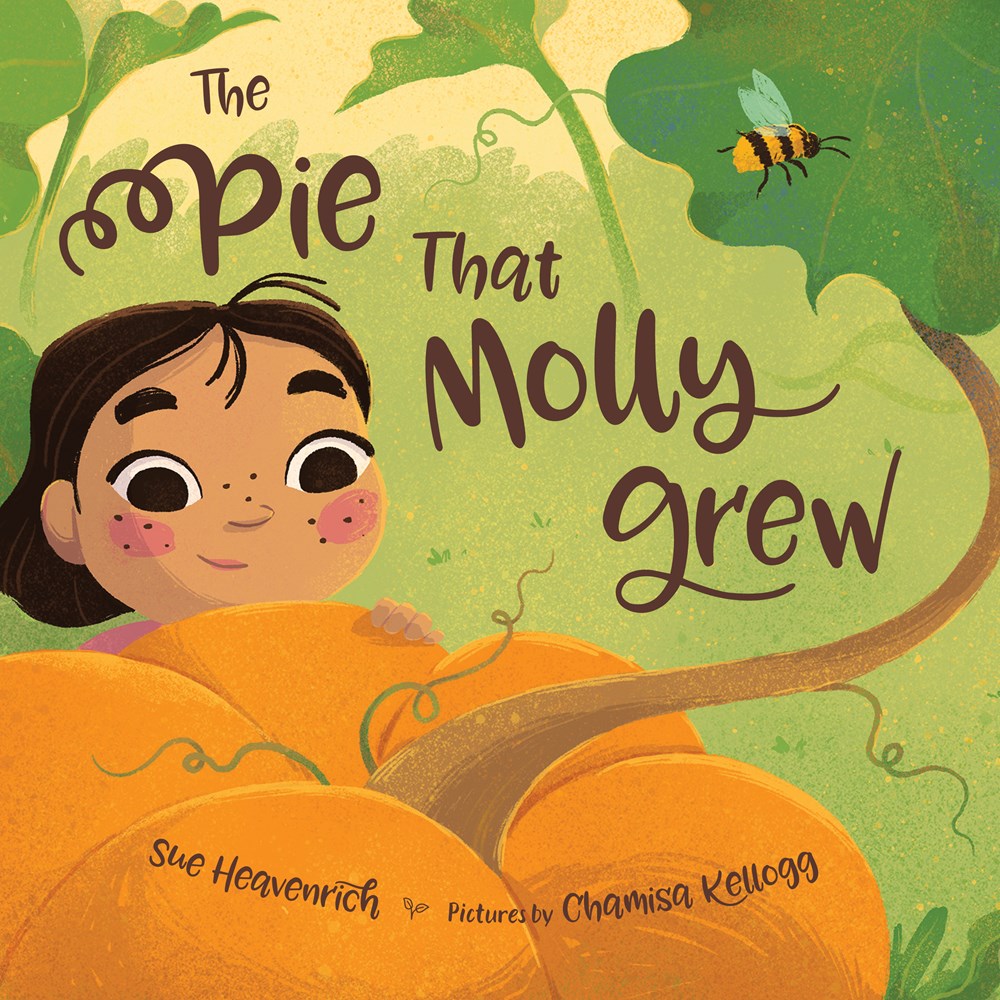
Thank you for inviting me over to your blog today. I always enjoy our conversations – even when they are online.
It was a pleasure to feature your book, Sue, and to introduce you to my blog followers! Happy Thanksgiving!
Judy’s blog is an excellent resource for teachers/librarians/parents! What a terrific interview with Sue Heavenrich, the author of THE PIE THAT MOLLY GREW. Sue’s writing and Chamisa Kellogg’s illustrations are delightful. I look forward to reading it and making that pie!
One of my favorite Fall-ish books is THE SCARECROW by Beth Ferry, illustrated by The Fan Brothers, and published in 2019 by Harper (an imprint of Harper Collins Publishers.) The story delves into loneliness and the unlikely friendship between a scarecrow and a crow throughout the seasons. Beth Ferry’s lyrical rhyming text and the Fan Brothers’ sensitive illustrations create a gorgeous masterpiece. THE SCARECROW is fiction in the category of Children’s Picture Books but would complement Fall STEM/STEAM curriculums.
Thank you for your kind words, Patty, and also for your recommendation for a Fall book. I completely agree that THE SCARECROW is a great book to add to Fall collections. Thanks for bringing it to the attention of Children’s Book Corner readers. Happy Thanksgiving, Patty!